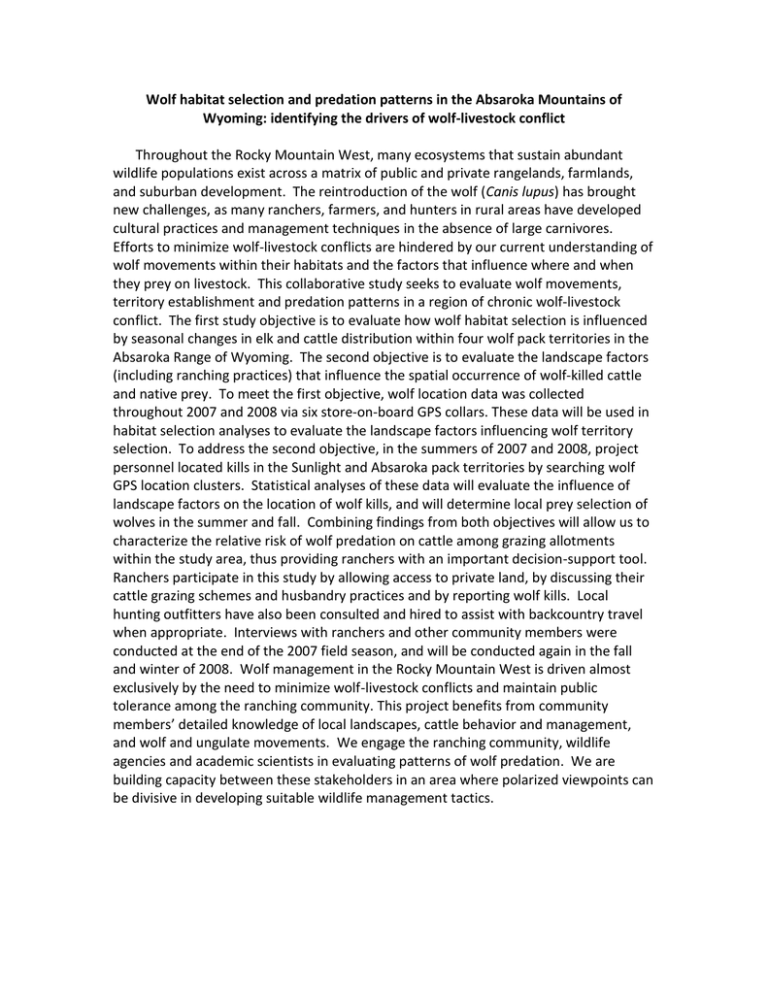Wolf habitat selection and predation patterns in the Absaroka Mountains of Wyoming: identifying the drivers of wolf-livestock conflict
advertisement

Wolf habitat selection and predation patterns in the Absaroka Mountains of Wyoming: identifying the drivers of wolf-livestock conflict Throughout the Rocky Mountain West, many ecosystems that sustain abundant wildlife populations exist across a matrix of public and private rangelands, farmlands, and suburban development. The reintroduction of the wolf (Canis lupus) has brought new challenges, as many ranchers, farmers, and hunters in rural areas have developed cultural practices and management techniques in the absence of large carnivores. Efforts to minimize wolf-livestock conflicts are hindered by our current understanding of wolf movements within their habitats and the factors that influence where and when they prey on livestock. This collaborative study seeks to evaluate wolf movements, territory establishment and predation patterns in a region of chronic wolf-livestock conflict. The first study objective is to evaluate how wolf habitat selection is influenced by seasonal changes in elk and cattle distribution within four wolf pack territories in the Absaroka Range of Wyoming. The second objective is to evaluate the landscape factors (including ranching practices) that influence the spatial occurrence of wolf-killed cattle and native prey. To meet the first objective, wolf location data was collected throughout 2007 and 2008 via six store-on-board GPS collars. These data will be used in habitat selection analyses to evaluate the landscape factors influencing wolf territory selection. To address the second objective, in the summers of 2007 and 2008, project personnel located kills in the Sunlight and Absaroka pack territories by searching wolf GPS location clusters. Statistical analyses of these data will evaluate the influence of landscape factors on the location of wolf kills, and will determine local prey selection of wolves in the summer and fall. Combining findings from both objectives will allow us to characterize the relative risk of wolf predation on cattle among grazing allotments within the study area, thus providing ranchers with an important decision-support tool. Ranchers participate in this study by allowing access to private land, by discussing their cattle grazing schemes and husbandry practices and by reporting wolf kills. Local hunting outfitters have also been consulted and hired to assist with backcountry travel when appropriate. Interviews with ranchers and other community members were conducted at the end of the 2007 field season, and will be conducted again in the fall and winter of 2008. Wolf management in the Rocky Mountain West is driven almost exclusively by the need to minimize wolf-livestock conflicts and maintain public tolerance among the ranching community. This project benefits from community members’ detailed knowledge of local landscapes, cattle behavior and management, and wolf and ungulate movements. We engage the ranching community, wildlife agencies and academic scientists in evaluating patterns of wolf predation. We are building capacity between these stakeholders in an area where polarized viewpoints can be divisive in developing suitable wildlife management tactics.



